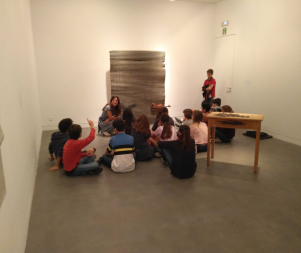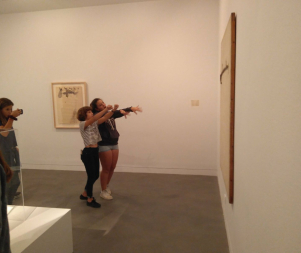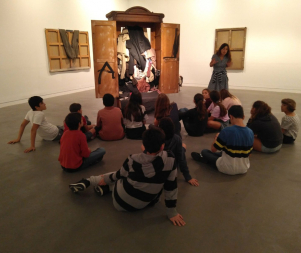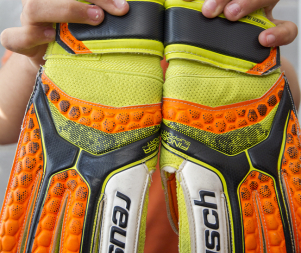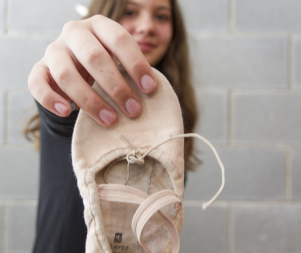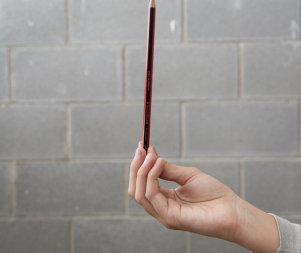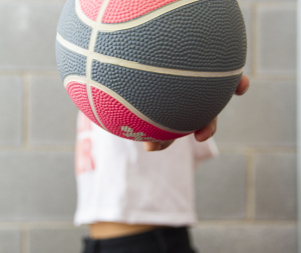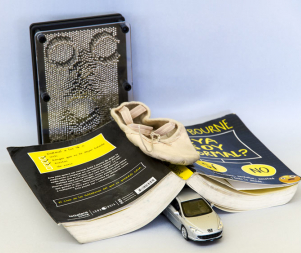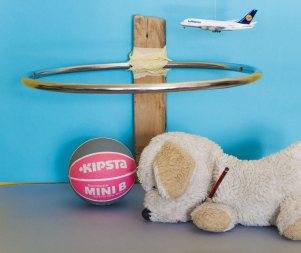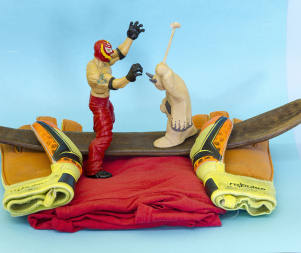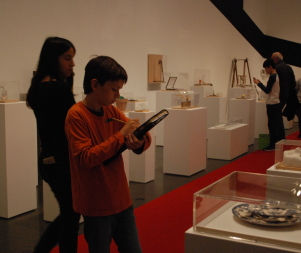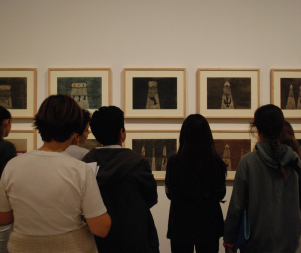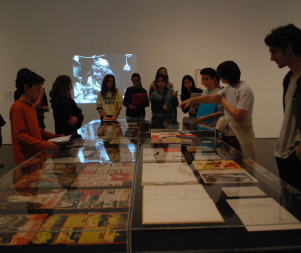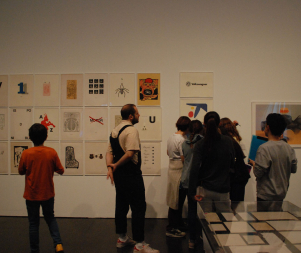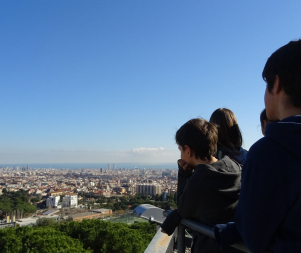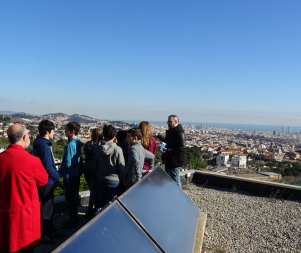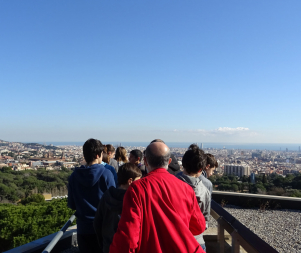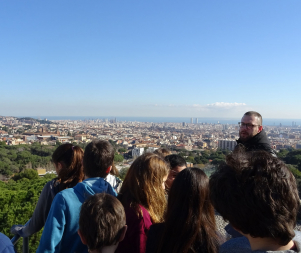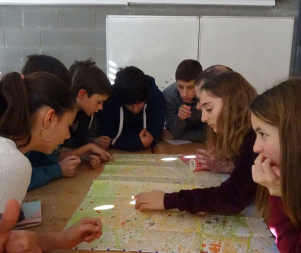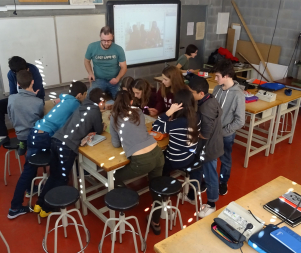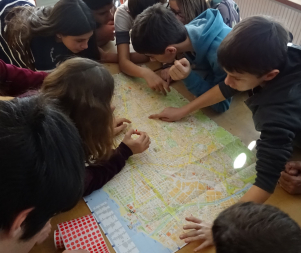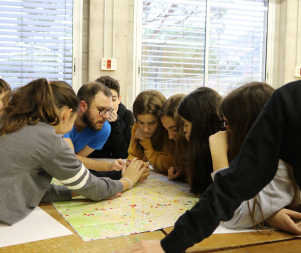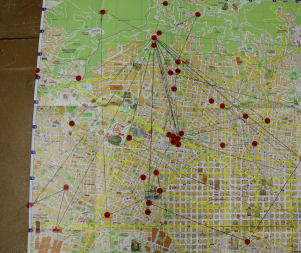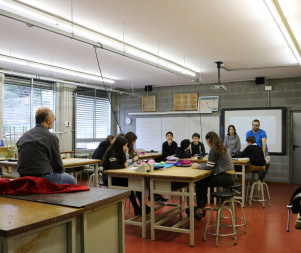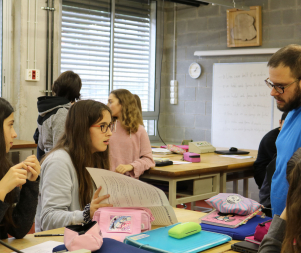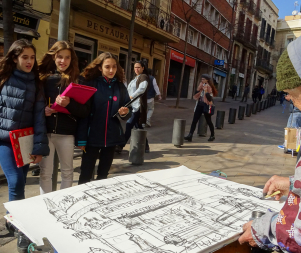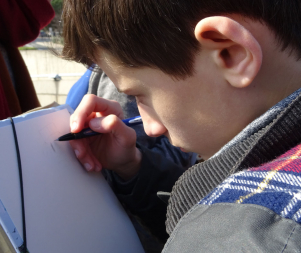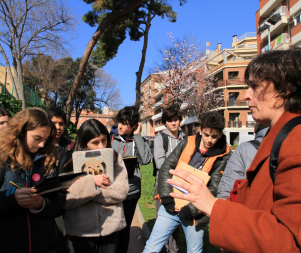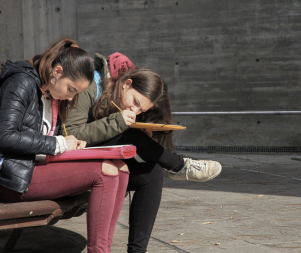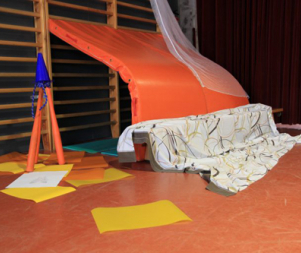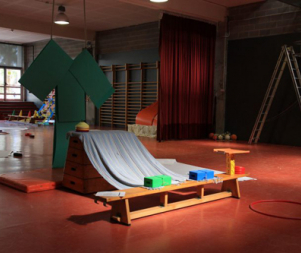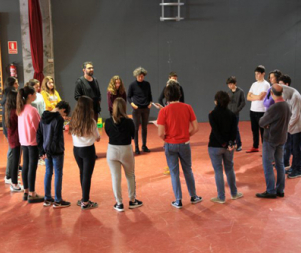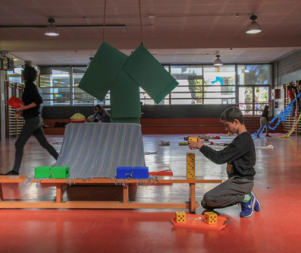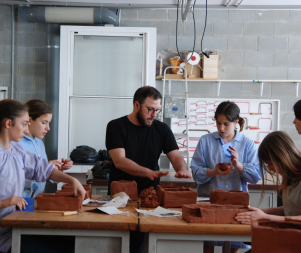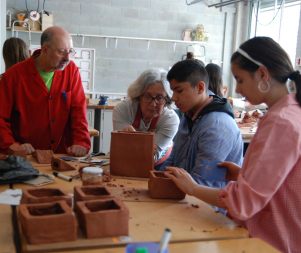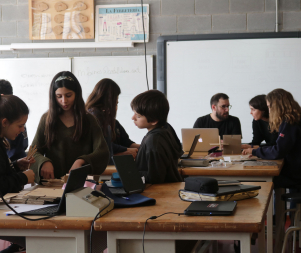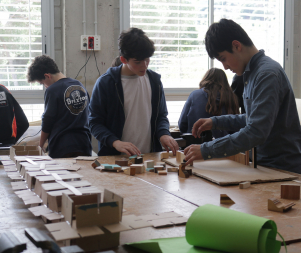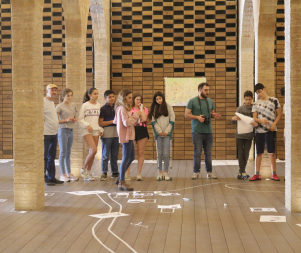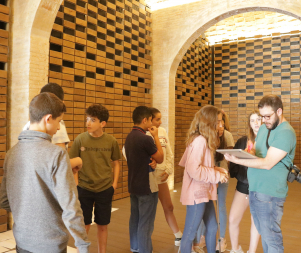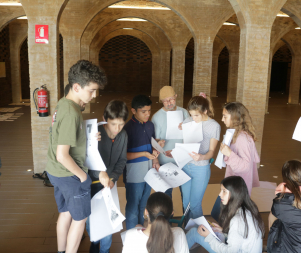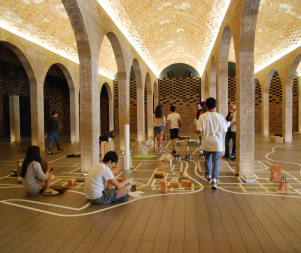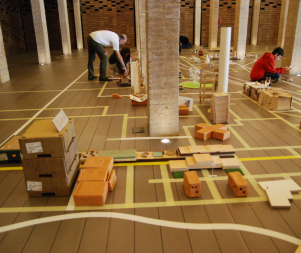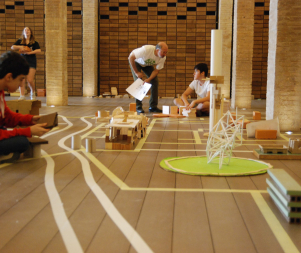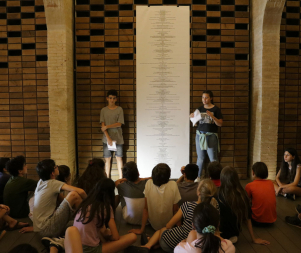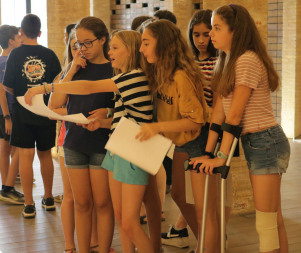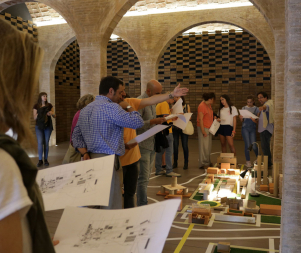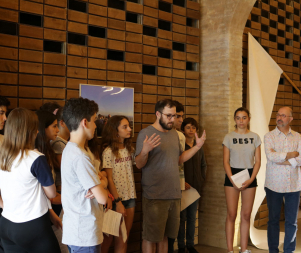- 14th EDITION 2022 / 2023
- 13th EDITION 2021 / 2022
- 12th EDITION 2020 / 2021
- 11th EDITION 2019 / 2020
- 10th EDITION 2018 / 2019
- 9th EDITION 2017 / 2018
- 8th EDITION 2016 / 2017
- 7th EDITION 2015 / 2016
- 6th EDITION 2014 / 2015
- 5th EDITION 2013 / 2014
- 4th EDITION 2012 / 2013
- 3rd EDITION 2011 / 2012
- 2nd EDITION 2010 / 2011
- 1st EDITION 2009 / 2010
Antonio R. Montesinos IN RESiDENCE at the School Costa i Llobera
Preliminary visits to the Antoni Tàpies Foundation, to the Andy Warhol exhibition...
Before the artist came to class, the teachers organised several outings to see exhibitions linked to art and creativity. The group went to the show devoted to Andy Warhol at CaixaForum and to the Antoni Tàpies Foundation to see its collection.
Through our objects: we introduce ourselves; the narrative
Once the artist Antonio R. Montesinos had launched the process, the first step were introductions and discovery of personal belongings. The pupils brought such objects to the classroom, writing stories and beginning to prepare a small publication.
Collage and fanzine
The objects were placed together, and new stories were composed around the relations between them. Finally, a short publication was edited in the form of a fanzine that the pupils received at home by post, along with some notes from their classmates about the creative process.
Joan Brossa: exhibition at MACBA
To explore the idea of the collage and the use of objects to create narrative in greater depth, a guided tour was organised of the exhibition devoted to Joan Brossa at MACBA. This enabled the pupils to discover Brossa’s visual poetry and intervened objects, after which they began a process of thinking about and appropriating these works.
Defining the work area: the city
To begin defining the working territory of the project, which is the city, a session took place on the school roof, which commands excellent views over Barcelona. The enabled the group to identify its most iconic buildings, well-known sites and the layout of the city as seen from an elevated viewpoint.
The city of duties
A series of exercises were proposed to encourage the group to start thinking about representations of the city and maps. Reference points were studied, and routes and places known to the pupils were indicated on the map. Zones were defined according to what were called “duties”: the school, extra-curricular activities, the houses of the pupils themselves or the relatives they often visit.
The city of desires
To create a different representation of the city, the pupils were asked to imaging places in the city that do not exist, whether public spaces, facilities or meeting points. Accordingly, after a brainstorming session, each pupil proposed new places that do not exist in the city as we know it.
Drifting and drawing
To find new ways of representing the city, the pupils drew the city of memory (cartographies) and through drifting around its streets. This exercise was led by the artist Clara Nubiola. The pupils used these representations to design a plan of a city that was then drawn by the group as a whole.
The Game of Kin: cooperation and speculation
Cooperative work and play to imagine and construct urban spaces based on specific instructions, while also creating narratives that may take place in these spaces. This activity took place in the gym using materials from the school itself, combining different elements to create ephemeral installations.
Constructions made from wood, cardboard and clay
Sessions were devoted to study all the points of reference and materials generated, and the group began to make preliminary attempts at constructing buildings to represent the city they were imagining in a model. The pupils decided on several constructions and began testing light materials. As decisions were taken, the group began to work with new materials that were to become final pieces in the model.
What does our city need?
Parallel to the construction of the model of the city, the group began a process of thinking about various questions: How is it organised? How are decisions taken? How is energy obtained? And resources? The answers to these and many more questions were included in two documents: the city rules and the life narratives, which formed part of the final exhibition.
Life narratives
The life narratives are fictional stories generated thinking about the imaginary inhabitants of the planned city. The pupils were recorded reading these texts and an audio was made and incorporated into the final installation.
The Cistern of King Martin: planning and installation
In order to decide the dimensions and layout of the model of the city, several visits were made to decide together about the distribution and sizes of the elements, and to install them in the space. At the same time, the visits involved research into the original uses of the site.
Presentation and guided tours
The presentation was open to all, and guided tours were organised for the pupils’ schoolmates. At the event, pupils gave tours to small groups and presented the various exhibition spaces, as well as describing the creative process.

